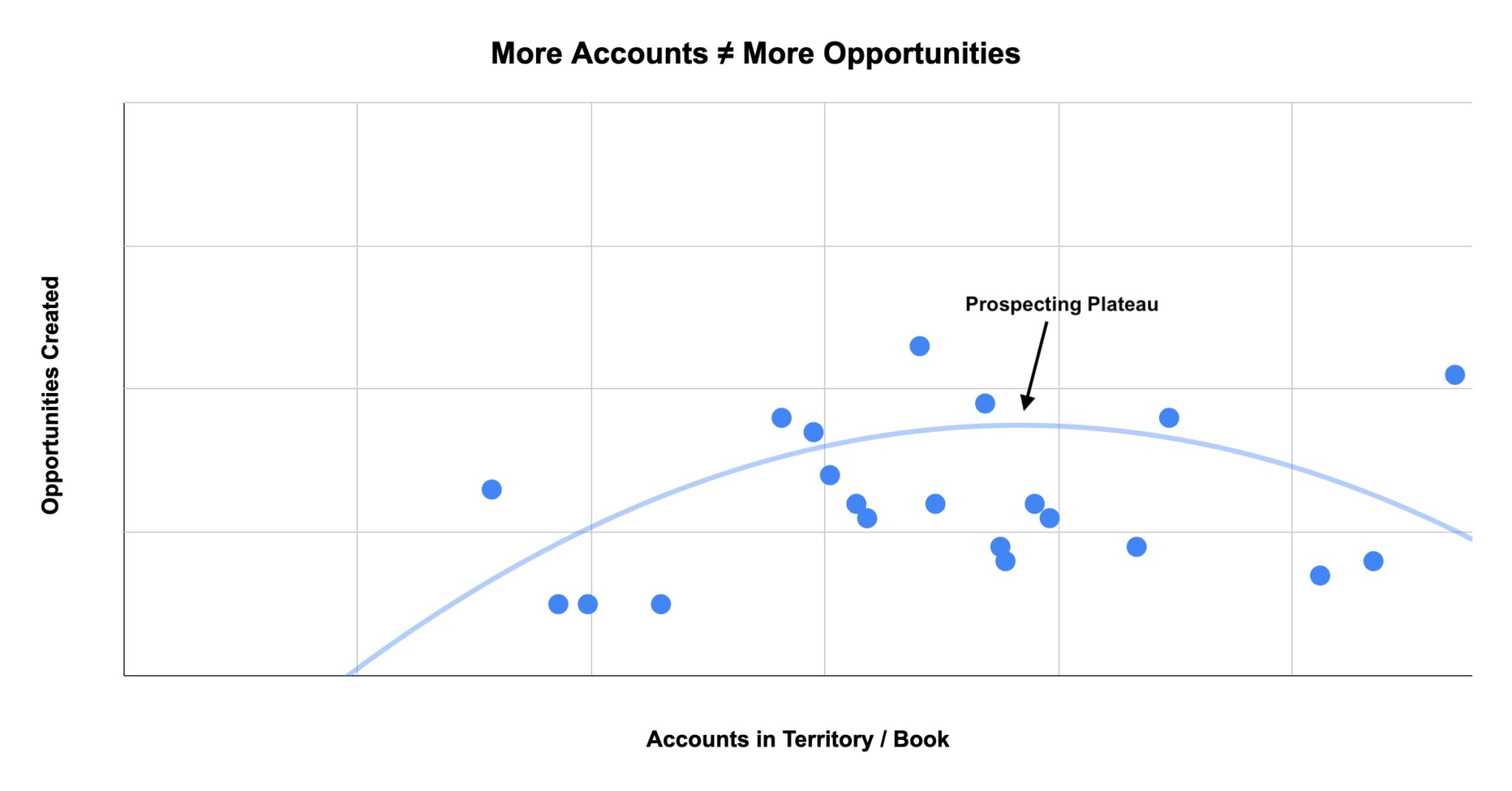Having more accounts does not mean creating more sales pipeline. Let's call it the sales prospecting plateau.
I’ve seen this over and over again on all sorts of new biz sales teams.
One of the things we do at Gradient Works is a Market Coverage Analysis for folks considering dynamic books. We take a year’s worth of opportunity, account and activity data and use it to analyze rep performance and account coverage. (Want one? Contact our sales team here, and tell them you saw this post.)
One of the most eye-opening analyses is when we compare sales territory size to opportunities created.
We’ve all heard reps complain that their territories are too small. So we give them more and more accounts. After all, that should result in more sales pipeline right?
Nope.
The chart below is representative of what we usually see. Each dot is a rep. The trendline shows a rough positive correlation between accounts and opps created - up to a point. After that, a plateau. And if the sales territory gets too large, we usually see a decline in total opportunity creation.

This is the prospecting plateau.
What causes the sales prospecting plateau?
1. Time
Beyond a certain point, the limiting factor for reps isn’t how many accounts; it’s how much high-quality engagement. This causes the plateau. Each rep has a maximum activity “budget” that’s bounded by time. Reps can work more and can use more tech, but that only increases high quality engagement a little bit. The upper bound is human effort, so something else has to change to materially improve productivity beyond that.
2. Overwhelm
Productivity starts declining when a sales territory gets too large because the overhead of managing the accounts overwhelms the ability to properly engage. It’s analysis paralysis. Reps resort to spray-and-pray or retreat to a comfort zone within their territory. Both of these result in low return on effort.
So what do we do?
Prioritize centrally.
Reps aren’t data scientists. Reduce wasted time by giving them fewer accounts that are already prioritized. It’s not enough to just provide scores for a list of 1,000+ accounts; instead give them ~100 high quality accounts to go after. This generally requires you to set aside legacy approaches like rigid geographic territories.
Coach focus.
With a focused book you can coach reps to engage every account. Set up analytics to see their engagement levels (and multi-threading) across the book. Coach them regularly to maintain at least 80% coverage on a rolling 30 day basis.
Keep books fresh.
When reps are deeply engaged with their book, they’ll eventually reach a point where some accounts are clearly just not ready. Allow reps (with clear, enforced ROE) to return accounts to a pool and receive new, centrally prioritized, accounts to work. This is the core of the dynamic books process. When you do this, you’re never wasting quota capacity on sifting through poor accounts.
As we head into territory planning season, don't make this mistake. Bigger isn’t better.





